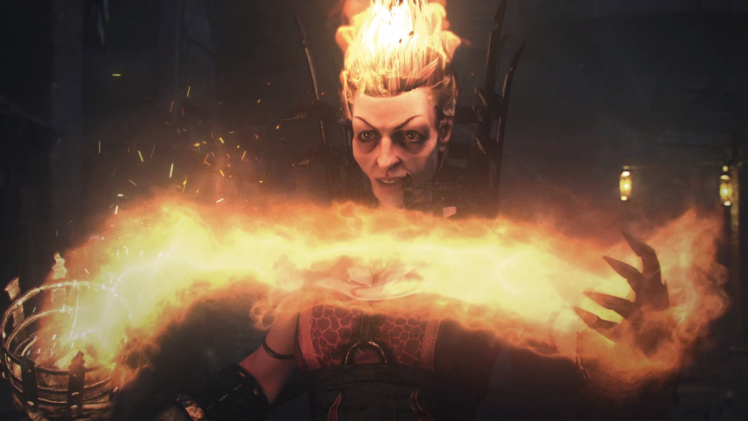It’s been six years since the last Left 4 Dead game, and in the series’ absence we haven’t had many games attempt to take the mantle of slaughtering hordes of enemies with friends in a first-person shooter.
Enter Warhammer: End Times — Vermintide (available now for PC), which mimics the Left 4 Dead structure and throws the fantasy fiction of the Warhammer universe behind it. The plot is that all the bad guys in the Warhammer universe have gotten tired of the good guys being alive, and they’re making one collective push against them, beginning with a legion of rat-like Skaven.
As it turns out, Skaven make for good zombie stand-ins, and developer Fatshark has managed to do right by their inspiration in a number of ways. But a number of key issues hold it back from being the multiplayer riot it could have been.
Check out our Reviews Vault for past game reviews.
What you’ll like
It gets the Left 4 Dead vibe right
During my first few games of Vermintide, I wondered if I shouldn’t just go back to Left 4 Dead. You choose from a number of different missions (unlocking more as you clear others), choose a difficulty, and head in with a group of friends, random players, or computer-controlled teammates — similar to Left 4 Dead. Then you fight hordes of rats the same way to fight zombies in Valve’s team shooter, with a combination of melee weapons and guns. Some “special” rats that will capture a single player and drain their health until a teammate manages to fight them off. It even has “Rat Ogres” to match Left 4 Dead’s Tank zombies, and they look as ridiculous as the concept implies. Several direct parallels gave me the feeling of a me-too clone.
Fatshark gets the feel right, though, and as I continued playing, I picked up on its nuances. Pressing the attack button while blocking will push enemies off you, which is fun at lower difficulties but essential on harder settings. You can also backdash by holding block and jumping, which evades attacks that would otherwise drain your stamina meter (the stat that helps you block enemy attacks). Rather than mashing the trigger (or clicking the right mouse button) constantly, I was blocking, dodging, and waiting for my moment to strike, which made the combat feel substantial and rewarding.
Vermintide also manages to produce similar highs that I felt with Left 4 Dead, like meeting a group of complete strangers, communicating with them about objectives and threats, getting through an encounter that seemed overwhelming at first, and then triumphing with a sliver of health and making it to the exit. When it works, it’s a great balance of challenge and engagement, and I can see myself doing more runs of the same missions with friends even after playing it for over 20 hours.
It also evolves that vibe
Vermintide also deals with one of Left 4 Dead’s major issues: lasting value. Sure, those games were popular enough that you’ll still find people playing them today, but it was hard to get excited about playing the same eight or so missions over and over. Vermintide alleviates this by introducing some Diablo-esque features into the formula; after every run, you’ll roll a set number of dice to see what kind of loot you get.
You can increase your chances of getting better items by finding tomes throughout the level, which take up item slots that could instead hold healing items. In one match, a group I was in had to think long and hard about whether we wanted to take a second Grimoire (a tome that reduces the team’s maximum health) with us, since we were already low on health and healing supplies, and we decided not to. These tomes are a great way to implement loot into a reflex-based game like this, since they add some crucial risk-reward without feeling like they’re only tweaking the numbers against you.
Every character feels different
Vermintide also adds some longevity to the Left 4 Dead model by distinguishing each of its five characters. Playing the Bright Wizard felt like I was playing another game, since she doesn’t need to look for ammo but instead relies on keeping her magic flames from consuming her. More important, the differences in classes ties directly into the loot system, which means every new weapon you get is a reason to revisit another class. Every class has their role, too, with the Dwarf and Soldier leading and corralling hordes of rats while everyone else focuses on finding special Skaven or dealing damage. This makes it easier for teamwork to emerge naturally and without anyone having to speak, which now seems like something I’ll miss if I got back to Left 4 Dead.
There’s also enough dialogue between these characters that you get to know and distinguish them based on their personality. The Dwarf and the Elf hate each other, the Wizard seems to resent everyone else, the Witch Hunter has this nasally, pompous voice that makes me dislike him. It’s what Left 4 Dead did, too, making the character interactions the center of its narrative rather than the actual plot, and knowing that the differences between these characters go beyond aesthetics and into how they actually play infuses these interactions with even more personality.


